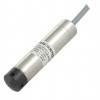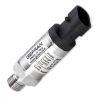Customisable low cost submersible probes for OEM manufacturers of data-logging and telemetry equipment.
Products
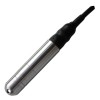 IMSL IP68 Stainless Steel 316L Hydrostatic Pressure Sensor - Water resistant pressure sensor for measuring hydrostatic pressures in the range of 0-0.5 mWC up to 0-100 mWC.
IMSL IP68 Stainless Steel 316L Hydrostatic Pressure Sensor - Water resistant pressure sensor for measuring hydrostatic pressures in the range of 0-0.5 mWC up to 0-100 mWC. 18.605 G Low Cost Submersible Diesel Fuel and Water Tank Level Sensor - Low cost OEM diesel fuel or water level sensor for installing inside or outside a storage tank.
18.605 G Low Cost Submersible Diesel Fuel and Water Tank Level Sensor - Low cost OEM diesel fuel or water level sensor for installing inside or outside a storage tank.
 SSPT Subsea Wet-Mateable Electrical Connector Pressure Sensor
SSPT Subsea Wet-Mateable Electrical Connector Pressure Sensor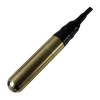 SWL Marine Bronze Submersible Level Sensor
SWL Marine Bronze Submersible Level Sensor IMTG Low Cost OEM Submersible Tank Gauging Level Sensor
IMTG Low Cost OEM Submersible Tank Gauging Level Sensor IMCTL Submersible Liquid Level and Temperature Transmitter
IMCTL Submersible Liquid Level and Temperature Transmitter
Applications
 Low cost, upstream/downstream, 5m range, fresh-water, weir level sensor - Sensor for measuring the difference in depth upstream and downstream of a freshwater weir with a maximum depth of 5 meters.
Low cost, upstream/downstream, 5m range, fresh-water, weir level sensor - Sensor for measuring the difference in depth upstream and downstream of a freshwater weir with a maximum depth of 5 meters.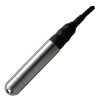 3 metre / 10 foot fresh water level transmitter for OEM system integration - Cost effective submersible transducer with a 4-20mA transmitter to output into a PLC analog module on a fresh water system for tank level control up to 3 metres (10 foot).
3 metre / 10 foot fresh water level transmitter for OEM system integration - Cost effective submersible transducer with a 4-20mA transmitter to output into a PLC analog module on a fresh water system for tank level control up to 3 metres (10 foot).
 Low power consumption fuel tank level sensor
Low power consumption fuel tank level sensor Low cost hydrostatic sensor for measuring depth of Diesel up to 2 metres
Low cost hydrostatic sensor for measuring depth of Diesel up to 2 metres

